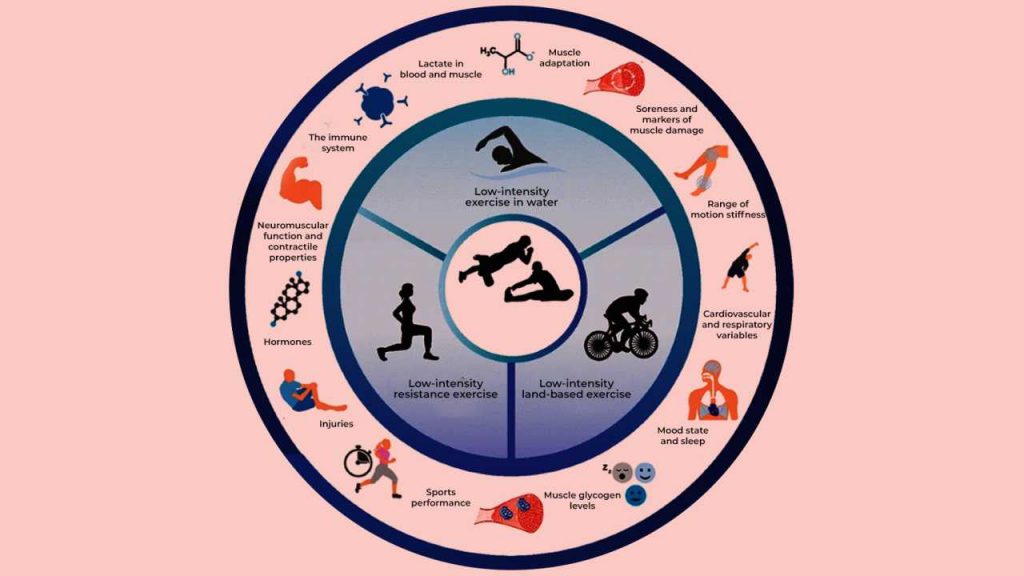
Why Is Active Recovery Important for Runners?

A long-distance exercise such as a half marathon or marathon is one of the most strenuous activities you can do. Adequate rest and recovery are important components of all workout regimens, especially the ones involving high-impact activities like running. Runners are always looking at ways to improve future performance, and one of the ways is to speed up the recovery process. Think back to your last race or long run — what was the first thing that you did afterwards? Was it to simply lie down on the couch with your legs up? Or did you rather keep your running shoes on and go for a light jog around the building before doing a light stretch? If you did the former, you are doing a form of recovery known as passive recovery. If you are doing the latter, that is an active recovery.
But, what is active recovery for athletes and does it have any benefits?
Active recovery and its benefits
The best-known and widely used post-running intervention is arguably active recovery, which can loosely be defined as a 5-15 minute low-to-moderate intensity exercise within one hour after a training session or race to facilitate recovery (Van Hooran, 2018).
One of the major motivations for an active recovery day workout is the removal of lactic acid (Baldari, 2004). Lactate is the byproduct of glucose metabolism in the muscle, which can build up during an exercise session, especially at higher intensities such as during a half or full marathon, and which is one of the key limiting factors of performance.
More lactate = Lower level of race performance
When lactate builds up in the muscles, it can cause the muscles to become fatigued. Not only will they stop contracting strongly, but you will also feel a “burn” or deep pain within your working muscles as a result of lactate accumulation (Farrel P, 1979). Studies on the benefits of active recovery have shown conflicting results (Van Hooran, 2018), with some showing benefits, and others showing either no benefit, or a detrimental effect.
However, an active recovery session has been shown to result in a faster return of blood and muscular pH to resting levels post-exercise, which can help restore the body’s glycogen stores faster
Active recovery workout for athletes has also shown to have many other physiological benefits, such as a faster heart rate recovery, and less muscle soreness (Van Hooran, 2018). Also, one study showed that runners who perform a 15-minute active recovery session immediately post-exercise have a reduced injury rate than those who did a 5- and 10-minute recovery session (Malliou, 2007).
How should you do active recovery?
The active recovery fitness training plan should involve any low-intensity movements such as swimming, cycling, light jogging, or resistance exercise (figure 1), but ideally should involve the same muscles that you worked during your run (ie, the legs). Keep in mind that these should be of low intensity — so, it should be at around 50%-60% of your maximal effort, or 5-6 on the rate of perceived exertion scale.
This can be followed by light stretching and foam rolling, both of which have been shown to reduce muscle soreness and improve recovery and next day performance (Van Hooran, 2018).

The actual method, intensity and duration of an active recovery session may differ from person to person, but the general guidelines show that an active recovery workout for runners should:
- Involve dynamic activities performed at a low-to-moderate metabolic intensity to increase blood flow, but prevent development of substantial additional fatigue
- Involve low-to-moderate mechanical impact to prevent the development of (additional) muscular damage and delayed-onset muscle soreness
- Be shorter than approximately 30 minutes to prevent substantial interference with glycogen resynthesis
- Involve exercise that is preferred by the individual athlete
- Involve the same muscles as used during the preceding activity
Also read: Common Running Injuries: Symptoms, Prevention and Treatment
So, if you just ran a half marathon at full tilt, your active recovery should start within 60 minutes minutes after your race, and should ideally be a 5-15 minute light jog, followed by a roughly 5-minute foam rolling and/ or stretching session of the worked muscles. After that, you are more than welcome to go home and put those legs up.
References
1. Baldari C, Vidiera M, Madeira F. Lactate removal during active recovery related to the individual anaerobic and ventilatory thresholds in soccer players. Eur J Appl Physiol 2004; 93: 224–30.
2. Farrell PA, Wilmore JH, Coyle EF, et al. Plasma lactate accumulation and distance running performance. Med Sci Sports 1979; 11: 338–44.
3. Malliou P, Rokka S, Beneka A, et al. Reducing risk of injury due to warm up and cool down in dance aerobic instructors. J Back Musculoskelet Rehabil 2007; 20: 29–35.
4. Van Hooren B, Peake JM. Do We Need a Cool-Down After Exercise? A Narrative Review of the Psychophysiological Effects and the Effects on Performance, Injuries and the Long-Term Adaptive Response. Sports Med 2018; 48: 1575–95.














